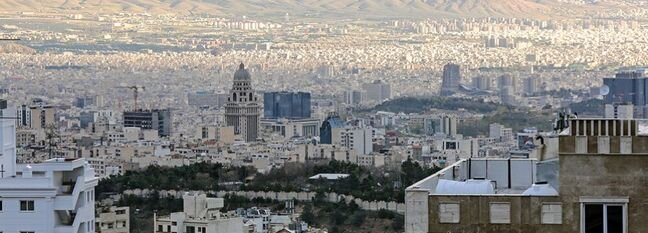Despite economic fallout Tehran real estate market flourishes
Statistical Center of Iran reports soaring prices

For thousands of years, houses with secluded gardens and courtyards have been a cornerstone of Iranian architecture, where a garden or a big terrace was common. I grew up in one of these houses near Mehrabad Airport. In the evenings there was plenty of time for youngsters to play football in the streets where traffic was almost non-existent and air was fresh.
As the population of Tehran grew in the post-revolution era the houses fell out of favor and were widely demolished to make way for apartment blocks.
Today, with a population of over 12 million people, housing is the cornerstone of people’s lives and personal investment.
“Despite the economic fallout (following the sanctions and coronavirus pandemic)”, says a downtown real estate agent H. Moradi, “the only thing that has kept up with the rising forex rate is the real estate market.” As paradoxical as it might sound, today the real estate markets all over the world are experiencing a downward trend in pricing amid the pandemic and its economic consequences.
The second part of this series will cover the negative impact on the global real estate markets amid the pandemic.
However, for the general public in Iran, the housing market remains one of the safest investments in this grueling economic times.
According to a recent real estate survey by the Statistical Center of Iran, lands, home, and rent prices rose by 43.1, 43.7, and 47.9 percent respectively on a year on year basis during the fourth quarter of the last Iranian year (Dec. 22, 2019-March 19, 2020).
According to the report, the number of land and rent deals decreased by 10.3 percent and 48.7 percent respectively while home deals increased by 12.8 percent.
The minimum price of each square meter of a downtown rundown property in the capital stood at 26.48m rials ($150) per square meter while the maximum was at 750m rials ($4,249), bringing the average to 208.15m rials ($1,179), reports the Financial Tribune.
According to announcement made by the Planning and Housing Economy Office of the Ministry of Roads and Urban Development, the number of home sales in Tehran stood at 11,046 during the third month of the current Iranian year (May 21-June 20), indicating an increase of 80.3 percent compared with the same period last year, but a decline of 4.5 percent compared with the preceding month.
The average price of each square meter of a residential unit in the capital stood at 190.71 million rials ($968) during the month under review, registering a year-on-year increase of 42.1 percent and a month-on-month rise of 12.1 percent.
Tehran’s real estate market has also been a favorite with the Iranian diaspora, whose purchases have helped in soaring housing prices in the past. Owning a house has several advantages for foreign residents. The first advantage is whenever they wish to return home for a short trip or retirement they can count on a residence. Second, they don’t have to pay the high taxes which most Western countries charge.
As Iran’s oil revenues continued to decline due to unilateral U.S. sanctions, its spending did not change, resulting in a widening budget deficit. Reduction of petroleum subsidies in November 2019 brought protests in all the major provinces with people arguing that if petroleum becomes more expensive then everything else follows suite. According to the Central Bank of Iran, the country has an inflation rate of 41.3 percent with a target of 22 percent for the future.
All this happened before the novel coronavirus pandemic which has deepened Iran’s economic recession, with global economic repercussions that will be felt in the coming months. In order to deal with the pandemic, the government requested permission to withdraw one billion euros from the National Development Trust Fund (Iran’s sovereign wealth fund).
To deal with plummeting revenues, the government and parliament are planning to impose new taxes and sell public holdings. In a report published in early June, the Islamic Republic of Iran Broadcasting (IRIB) informed of the 10th parliament, where the new legislators were discussing introducing a capital gains tax plan on real estate market. The purpose of which is to collect taxes on vacant housing, transfer the main resources of real production, and prevent hoarding. However, the proposal has been delayed by other parliamentarians arguing the bill could have negative impact on the housing market.
According to the latest data published by the Central Bank of Iran on rent increases Tehran during May 21 – June 20, the price of rented residential properties in Tehran and across urban areas increased by 27.6 percent and 30.7 percent respectively compared with the similar month last year.
Tenancy agreements signed as of June 29 may not increase rents by more than 25 percent in Tehran and 20 percent rise in other large cities, President Hassan Rouhani said on Sunday.
In early May, two-month extensions on rental agreements terminating between February 20 and May 20, to control the spread of coronavirus and help tenants battling job and income losses during the pandemic.
Leave a Comment